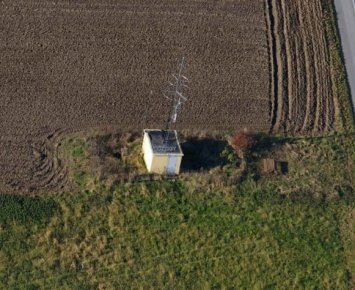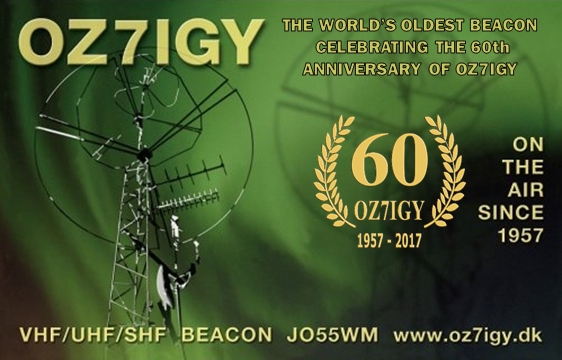

OZ7IGY dates back to the International Geophysical Year in 1957. Initially active on 144 MHz but later followed by more bands so that OZ7IGY now transmits from 28 MHz to 24 GHz including 40 MHz and 70 MHz. All the beacons use the Next Generation Beacons platform.
| Frequency [MHz] | USB dial* |
ERP [W] | ASL [m] | 99% accuracy [mHz] | Year QRV | Sponsor |
| 28,271 | 28.270.200 | 10 | 95 | 1 | 2009 | OZ9DW |
| 40,071 | 40.070.200 | 10 | 97 | 1 | 2007 | G0KTN |
| 50,471 | 50.470.200 | 25 | 98 | 1 | 1990 | OV2B |
| 70,021 | 70.020.200 | 25 | 100 | 1 | 2003 | Event-OZ |
| 144,471 | 144.470.200 | 50 | 102 | 3 | 1957 | EDR |
| 432,471 | 432.470.200 | 75 | 103 | 9 | 1958 | EDR |
| 1 296,930 | 1.296.929.200 | 90 | 95 | 26 | 1978 | OZ4HZ |
| 2 400,930 | 2.400.929.200 | 30 | 98 | 46 | 1985 | OZ1MY (SK) |
| 3 400,930 | 3.400.929.200 | 50 | 96 | 68 | 2006 | DAVYS |
| 5 760,930 | 5.760.929.200 | 50 | 98 | 115 | 1992 | DAVUS |
| 10 368,930 | 10.368.929.200 | 80 | 97 | 237 | 1999 | OZ9QV |
| 24 048,930 | 24.048.929.200 | 20 | 97 | 481 | 2012 | DAVUS |
| Notes: | Active beacon | Out of service | Upcoming maintenance, see event log | *: On most radios |
All the beacons transmit in a 60 s mixed mode sequence (PI4 + CW + carrier) and are GPS locked. This ensures that the transmitted frequencies 99% of the time are better than the values listed above.
On 30 October 2012 the first two Next Generation Beacons were put on air. The Next Generation Beacons platform is open to others and the software can easily be adapted to other modulations and sequences. Emanuele, IW9GDC and beacon manager of IW9GDC/B that also uses the Next Generation Beacons platform says: “… I can really say that this hardware is actually the best ever made … 4 km straight line and cannot detect any issue with the signal.”
PI4 decoded and DX cluster spots
